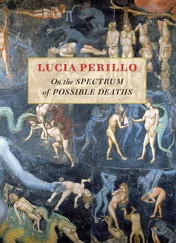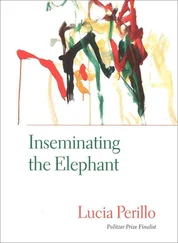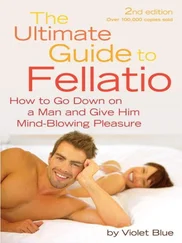There is also the problem of the wheelchair, which must be banished from the diorama, whereupon the wheelchair retaliates by barging into the scene too. One wants to camouflage it with garlands, or weeds like the ones soldiers in Vietnam wore on their heads, but that would only make it more obvious. I’ve thought of asking Jim to remove it, but doing so would make my faintheartedness too blatant. Instead let me look at it steadily and say, Yes that is my wheelchair over there . Oh no, that is too tough, so I close my eyes and enter a darkness where it wreaks havoc nonetheless.
From the first I heard of it, I was eager to see Pedro Almodóvar’s movie Talk to Her , which builds its plot around the erotic potential in the afflicted body. The two female leads occupy slots far from the center of the spectrum of possible incapacitation — they’re in comas. And the story makes use of doubles, two couples, two healthy men and two comatose women. One has been in a car accident when the movie commences, and the other, a bullfighter, gets gored while we watch. But it is the sight of the inert body being handled that makes the viewer squirm, as the male nurse, Benigno, rubs it with emollients. He opens her legs like the handles of a pliers so that he can perform the offices of the washrag and the menstrual pad. Her total pliancy is a parody of the pornographic ideal, and we soon grow confused over whether we are seeing acts of charitable love, or courtship, or duty, or perversion.
In the movie the women are, in a strange way, perfected. One good (if predictable) joke — when Benigno voices his intention to marry his Alicia — is that they will get along better than most married couples. The bullfighter’s boyfriend, on the other hand, has a normal relation to his lover’s comatose body, which means he is estranged from it and helpless in its presence. Hence Benigno’s advice: talk to her .
Most of us tend to panic when confronted with the mystery of stricken flesh — we do not know how to fix it, and this is the cause of our estrangement and helplessness. There is also an iota of fear: of contagion, no matter how irrational, no matter how nontransmissible the sickness. As lovers and nurses, the men in the movie have a choice of only the perverse relationship or the inadequate one. This is a neat cinematic dichotomy, of course, about which we know one thing for sure: that the body’s languishing will somehow be resolved in two hours, whereupon we will once again step out into the true and scary world that has no such finite starts and ends.
Scary because here the languishing can go on for years, and whatever allure the pliant body might have inevitably deteriorates as the caregiver is worn down by his duties. Almodóvar’s movie does give to one of its women the cinematic cliché of the miracle cure, but coming to terms with my illness has forced me to give up on that possibility, which I think caused the relationship between my psyche and my illness to remain childish, meaning that it was presided over by a child’s false sense of immunity to time. While last year’s therapist felt that my giving up on hope had darkened my outlook, I think hope shackled me to my body as it dropped like dead weight to the floor of the sea. And surrendering hope has left me feeling unburdened, lighter, strangely giddy as I float.
There is an erotic component to this surrender — it comes from the self relinquishing control, throwing itself away. Then the body is offered to whatever seizes possession of it — whether the seizer be disease or time or a human lover. Or it could be religious ecstasy — as in Bernini’s sculpture Saint Theresa and the Angel , the saint’s head tipped back with her eyes closed and her mouth hanging slack, again that half-bored, half-sleeping decoy face, signaling that the attention normally given to the world is being turned inward with all the intensity Theresa can muster.
I’m getting my picture of the sculpture from the cover of the book Erotism , by Georges Bataille, French philosopher of the sexual appetite whose thinking derives from a blend of Baudelaire and the Marquis de Sade. Bataille takes for his book’s premise that eroticism is assenting to life up to the point of death . I don’t know what this means in pragmatic terms, but my brain drifts in the same direction as the main current of his thought: that we are each so alone in our bodily organism-ness that our spiritual lives, and our sexual lives, act out our desire to achieve communion with something beyond the edges of our own skin. The egg and sperm’s smashing together is the version of his thesis writ in miniature; in larger form, there is the example of the human falling down enraptured and speaking in tongues, an Esperanto that links the soul to a mystical race from the beyond.
There is also the larger drama that takes place in the bedroom, more serious than a game, sort of like the living tableaux that women would form at garden parties in the nineteenth century, the Three Graces with their limbs intertwined (I know about this only because I had to orchestrate just such a tableau vivant in my role as the mayor’s wife, in our sixth-grade production of The Music Man ).
You can see why these activities would be appealing to a cripple. Joining forces with someone else means a respite from fighting the body’s ravages on one’s own. Strife loves company, especially strife in which one is bound to go down the loser. Plus, it seems that if I can get deep enough into my body, maybe all its disturbing symptoms will disappear, the way the storm goes calm at the eye of it. And this does happen — a bit of good biology I chalk up to the pain-relievers called endorphins that are released by the brain.
There are also practical considerations: sex is usually accomplished lying down, a posture that camouflages frailty. Except, of course, now the bulge of the pump is always there.
To be partly human and partly a mechanical thing: this is a cyborg, in the parlance of science fiction. Sometimes the cyborg becomes an erotic object for her very freakishness: I have seen several Star Trek episodes that hinge on this premise. She has the stamina of the machine, plus the mystery of who-knows-what carnal apparatus. She has human beauty, usually manifested in a slightly abstract form, sheathed in silver skin or with a face partially occluded by a metal superstructure. Part of me thinks that being a freak is interesting — the great hunt of my youth was for some distinction that would render me more exotic than the run-of-the-mill other girls. And one of the most arousing memories of my recent life is Jim batting my hand away from where I was using it to anchor the hem of my T-shirt, this when the foreplay was just starting to take, him saying I don’t care if I see it .
All my life, in health and out, I have hunted for communion — drugs, meditation, mountain-climbing, men, a variety of religions; I have sought dissolution of my physical walls, the body cast off like clothing stepped out of and kicked across the floor. Lately I’ve even looked at the maundering of that newest of Bataille’s offspring, the art history professor in France who supposedly had sex under highway bridges with street people and stevedores. I understand why she would want to do it, though I see it a weakness in her character, this desire to cast off the body when there is nothing wrong with hers.
As far as poetry goes, the body in extremis has given us Crazy Jane and Baudelaire — or, for a more homegrown example, we could look at Raymond Carver’s “Proposal,” a poem that is partly about making love after his diagnosis of terminal cancer, surely a justifiable circumstance for self-relinquishment:
Back home we held on to each other and, without embarrassment or caginess, let it all reach full meaning. This was it, so any holding back had to be stupid, had to be insane and meager. How many ever get to this: I thought at the time.
Читать дальше











![Various - Birds and Nature, Vol. 12 No. 5 [December 1902]](/books/745517/various-birds-and-nature-vol-12-no-5-december-thumb.webp)
![Various - Birds and Nature Vol. 11 No. 2 [February 1902]](/books/745533/various-birds-and-nature-vol-11-no-2-february-1-thumb.webp)